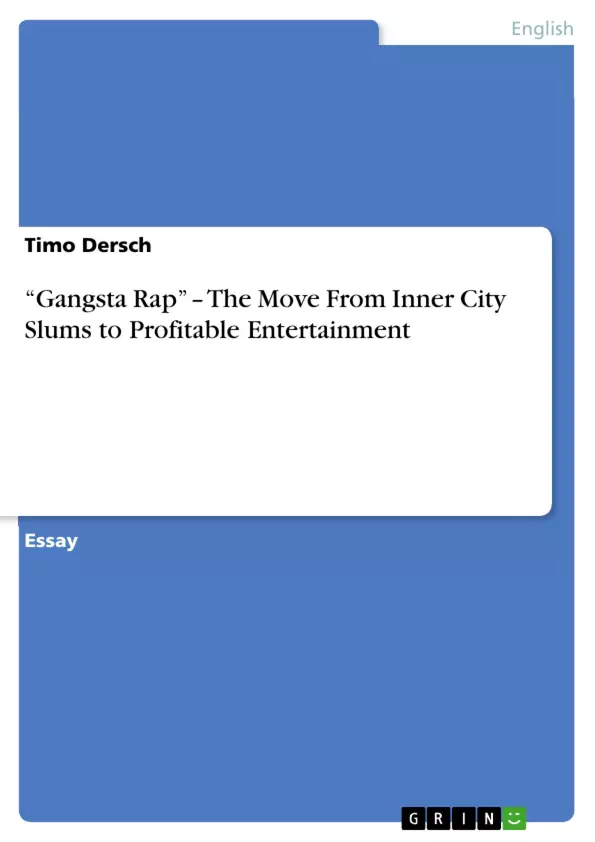Eine Übersicht über die Entwicklung der Subkultur und Musikrichtung "Gangsta Rap" welche in den nordamerikanischen Ghettos der Siebziger und Achtziger Jahre entstand.
Inhaltsverzeichnis (Table of Contents)
- “Gangsta Rap” – The Move From Inner City Slums to Profitable Entertainment
- The Pioneers
- The Main Themes of “Gangsta Rap”
- “Gangsta Rap” from a Social Perspective
- “Gangsta Rap” from a Market Perspective
- The Culture
- The Rise of “Gangsta Rap”
- From “Real” to “Fake” Gangster Rappers
- The Impact of “Gangsta Rap”
- From Street Crime to a Music Genre
Zielsetzung und Themenschwerpunkte (Objectives and Key Themes)
This text aims to examine the evolution of “gangsta rap” from its roots in the inner-city slums to its current status as a profitable entertainment genre. It explores the social and cultural context of the music's rise, analyzes the shift from authentic street stories to commercially driven imagery, and discusses the lasting impact of “gangsta rap” on society.
- The origins and development of “gangsta rap”
- The influence of social and economic conditions on the genre's emergence
- The transition from real-life narratives to commercialized portrayals
- The impact of “gangsta rap” on youth culture and societal perceptions
- The blurring of lines between authentic gangster experiences and marketing strategies
Zusammenfassung der Kapitel (Chapter Summaries)
- “Gangsta Rap” – The Move From Inner City Slums to Profitable Entertainment: This chapter introduces the concept of “gangsta rap” and its origins in the 1980s, highlighting the shift from traditional rap to lyrics focusing on violence, drug dealing, and street life. It also examines the impact of the genre's commercial success and its transition from a subculture to a mainstream phenomenon.
- The Pioneers: This chapter focuses on the early artists and albums that defined “gangsta rap,” emphasizing the role of Ice T, NWA, and Dr. Dre in establishing the genre's sound and themes. It explores the controversial content of their music and the social and cultural context of its rise.
- The Culture: This chapter delves deeper into the cultural context of “gangsta rap,” examining the role of drugs, street gangs, and social inequality in the genre's development. It analyzes the relationship between the music and the lives of young people in inner cities, highlighting the appeal of the genre's depiction of a world often hidden from the mainstream.
- The Impact of “Gangsta Rap”: This chapter examines the impact of “gangsta rap” on society, including its influence on youth culture, its impact on media portrayals of crime and poverty, and its controversial relationship with social issues such as violence and drug use.
Schlüsselwörter (Keywords)
The primary keywords and focus topics of this text include "gangsta rap," inner-city slums, drug trade, social context, commercialization, authenticity, marketing strategies, youth culture, media portrayals, and societal impact. These terms encompass the core themes and concepts explored within the text, providing a comprehensive overview of the phenomenon of “gangsta rap” and its evolving relationship with society.
- Quote paper
- Timo Dersch (Author), 2010, “Gangsta Rap” – The Move From Inner City Slums to Profitable Entertainment, Munich, GRIN Verlag, https://www.grin.com/document/160707



